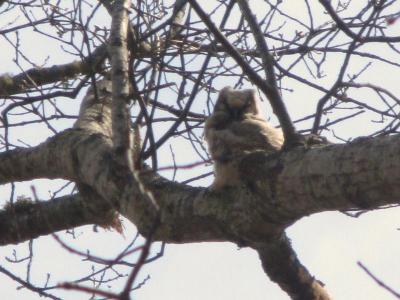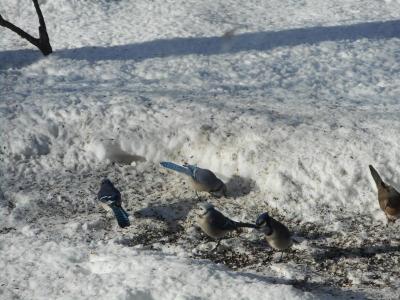Lloyd Center continues tracking winter birds by Jamie Bogart, Lloyd Center Research Associate
In December, the Lloyd Center embarks on its 32nd Annual Winter Waterfowl Survey, for the first of two surveys aimed at documenting winter waterfowl use of our coastal systems.
Since completion of the 25-year summary (1988-2013), it’s been apparent that a select few highly dominant species exist. These include the Canada Goose and the non-native Mallard, two species that benefitted from human influence. Considering both migrants and growing numbers of resident birds, Canada Goose abundance far outnumbers other waterfowl. Other species include the American Black Duck which has suffered due to competition with Mallards but has a robust migratory and wintering population and is by far the most abundant duck species; and two dominant divers, Bufflehead and Red-breasted Merganser, which may be seen on any visit to an estuary or coastal pond. “Subdominant” species include Mute Swan, another non-native which benefitted from human use and a diverse assemblage of divers which include scaup species, Common Goldeneye, Ruddy Duck, and Canvasback. Monitoring the abundance and distribution of these waterfowl continues to provide important winter biodiversity data.
A more recent venture is formalized surveys of the bird feeders on the Lloyd Center property. This year-round survey includes the “Feederwatch” portion which is a program designed by the Cornell Lab of Ornithology to monitor bird use from mid-November to mid-April, which is the important phase when feeders are a critical winter food source for migrants and resident birds alike. The 2018-2019 and 8th consecutive Feederwatch season conducted by the Lloyd Center is underway, with shifts in feeder locations to accommodate renovations leaving the birds un-phased!
Through the 2017-2018 season, 144 surveys had been conducted and 39 species documented. A total of 9,015 individuals were counted for an average of 63 feeder birds per survey. Dominant species have included Mourning Dove, American Goldfinch, Dark-eyed Junco, White-throated Sparrow, and Tufted Titmouse. Subdominants have included Red-winged Blackbird, Black-capped Chickadee, Brown-headed Cowbird, and Blue Jay. Three species showing borderline dominance include Downy Woodpecker, White-breasted Nuthatch, and Northern Cardinal.
Notable trends for dominant species include consistently high abundance of Mourning Doves, and recently, extremely low numbers of American Goldfinch, after consecutive irruption years. White-throated Sparrow numbers also declined following higher numbers in a recent season. For subdominants, Brown-headed Cowbird abundance has fluctuated including years with large flocks seen regularly, Blue Jays had a recent irruption year, and Red-winged Blackbirds appear to be on an overall increasing trend. The other species listed here as dominants are familiar seed gatherers, mostly resident and have showed minimal annual variation. For species showing borderline dominance, White-breasted Nuthatch numbers have remained relatively low and constant, while Northern Cardinal have shown some fluctuation. This growing data set adds to our overall biodiversity data and sheds light on population trends and habitat quality. Human use of the landscape and ultimately climate change determine extent of use of our coastal embayments by wintering waterfowl, and feeders as a food supplement by forest birds.
Other ventures include the SEANET project for which volunteers walk beaches to document seabird mortality and the “simple” search for owls on the Lloyd Center property where both Barred and Great Horned Owls pairs nest. Owls may be seen on Lloyd Center Owl Prowls or with luck on a leisurely daytime walk on our trails. During the quiet winter months, birdlife is active and the Lloyd Center is on the prowl!
The Lloyd Center for the Environment, a 501(c)(3) non-profit organization, founded in 1978 and situated with its headquarters and spectacular nature preserve overlooking the scenic Slocum River estuary, has achieved a well-earned reputation for excellence in environmental research and education. Through its innovative outreach programs, it has established itself as a highly regarded leader in the ongoing effort to raise awareness of the area’s fragile coastal resources and the importance of protecting them.
The Center’s 82-acre property offers over five miles of walking trails, the “Bridge to Discovery” dock on the Slocum River, vernal pools, oak-hickory forest, freshwater wetlands, salt marsh, estuary views, and is home to two injured raptors (a screech owl and red-shouldered hawk).
The Lloyd Center’s Visitor Center is currently closed for renovations, however, trails remain open from dawn to dusk, seven days a week. The Lloyd Center for the Environment is located at 430 Potomska Road, Dartmouth, Massachusetts. For more information, visit www.lloydcenter.org or call 508-990-0505.














